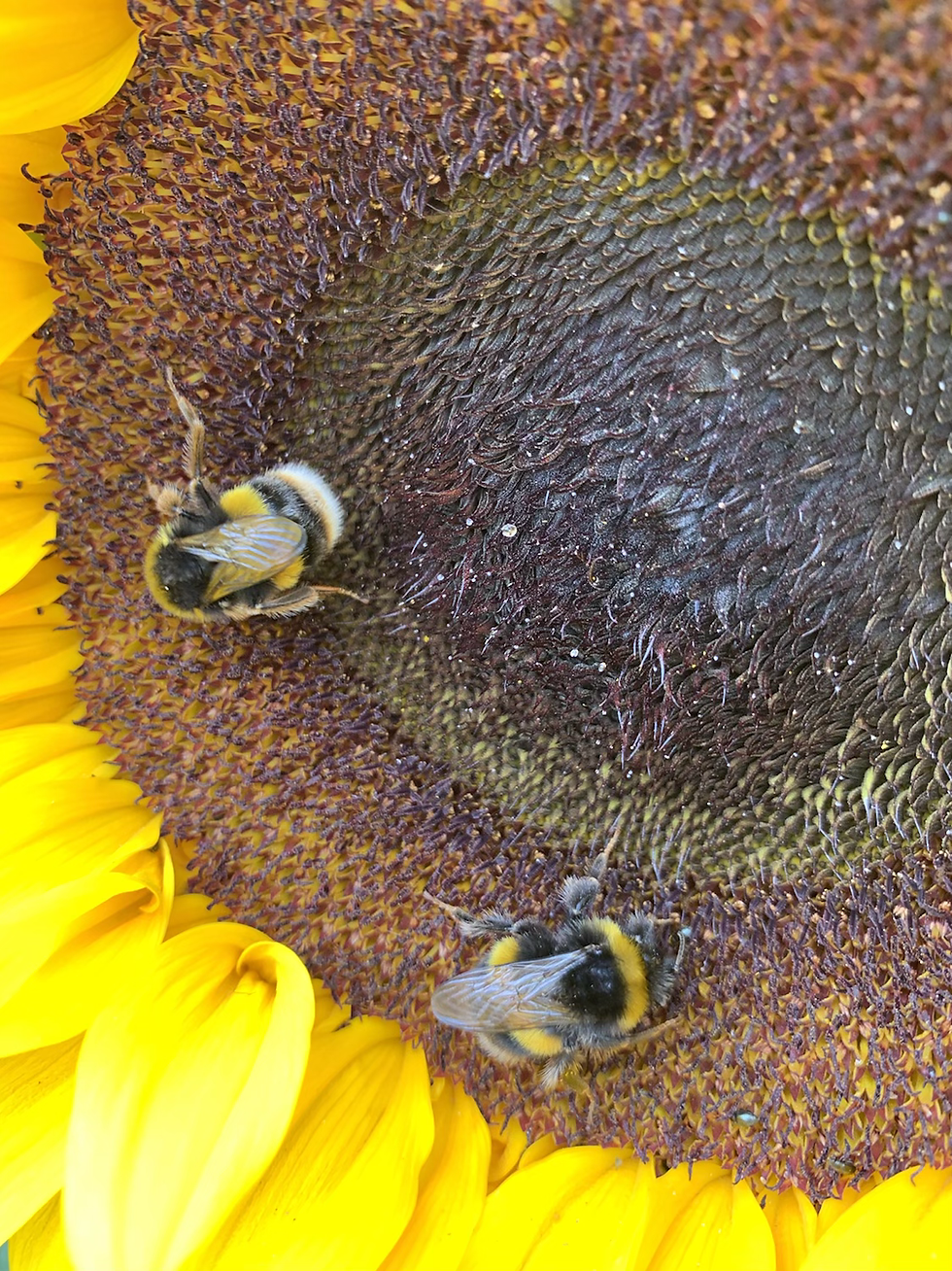Wildflower Planting Made Easy
- thenaturebugclub

- Mar 19, 2021
- 4 min read
A little bit about Seedball
Conservation is at the heart and soul of Seedball and our aim is to fill the world with wildflowers starting with the spaces people have at home!

Ana and Emily, the founders of Seedball met at Aberdeen University in 2010, where both were studying PhDs in conservation. At the time they really wanted to grow wildflowers for the bees but were not having much success. They discovered the concept of seed balls through the work of Masanobu Fukuoka and spent two years perfecting their own, initially by hand-rolling them on Ana’s kitchen table.
By 2012 they had created the wildflower Seedball we know and love today and over the years their range of mixes has increased with at least one new mix being added annually. Each mix containing only native wildflowers and is put together with the help of expertsto be beneficial to wildlife.

Why It’s Important To Be A Bit Wild
The UK has lost 97% of its wildflower meadows since WW2, leaving a meagre 3% for bees and butterflies to forage and keep their young fed. These areas have also become fragmented, making it difficult for insects to travel the large distances between them and causing populations to become isolated.
Insects are vital for life on earth, they help develop healthy soils, break down decaying matter and pollinate plants. Without bees we would not have some of our favourite fruits like apples and strawberries. But insects are at risk, numbers are going down and some are at risk of extinction.
Growing wildflowers is a really important way to help insects thrive. By adding a ‘bee-stop’ or ‘insect café’ of nectar and pollen rich blooms that they love. Wildflowers will also attract and encourage insects that are beneficial to gardens such as ladybirds and lacewings, loved by gardeners as they both have voracious appetites for aphids, meaning no more pesticides.

“Growing wildflowers in our spaces can mean a stepping-stone for insects to stop and feed and help them on their journey.”
Habitat loss is the biggest factor to the declining numbers of our wildlife, new roads, more buildings and expanding farmland has decreased the natural places for them to live, which is why it is so important to grow wildflowers in our spaces. By being a little less tidy in the garden, leaving of piles leaf litter and logpiles, popping in a wildlife pond and not mowing the grass so often we can provide nectar for longer or a haven for wildlife.
If we all better use whatever space we have available to us (whether a back garden, balcony, window box or little patio) to grow wild, together we can have a hugely beneficial impact on our local ecosystems.
Many insects and small mammals have a secret relationship with wildflowers.
Some wildflowers support may different types, such as the diminutive Birdsfoot Trefoil which is the food plant of the caterpillars for priority listed butterflies, such as the Wood White and Silver Studded blue. The tiny Silvery leaf-cutter bee uses its line the cells of their nests.

Seedballs are super easy to use.
They just need scattering on top of bare soil, in the spring or autumn and watering if there is not much rain. Wildflowers will start to germinate in the first, second and even third season, so a wildflower patch will grow and change over the years, supporting and benefiting many different types of wildlife.
The Seedballs themselves are made of clay and peat-free compost which help the seeds to germinate and a sprinkling of chilli-powder to deters pests from nibbling on the young shoots.
Seedballs are best scattered in Spring or Autumn.
Each tin contains 20 seed balls, enough to cover 1 metresquare in a garden bed or 3-5 medium sized pots (leave at least 10cm between each ball).

Bee Mix
A mix of native wildflowers that bees will just love! This carefully selected mix is designed specifically to attract solitary bees, honey bees and bumblebees. Each Bee Mix seed ball contains approximately 30 seeds from a mix of Birdsfoot Trefoil, Foxglove, Red Clover, Viper’s Bugloss and Wild Marjoram – all recommended as bee-friendly plants by the Bumblebee Conservation Trust. We’ve also added a sprinkling of pollinator-friendly annuals Chamomile, Cornflower, Corn marigold, and Night-flowering catchfly.

Butterfly Mix
A mix of native wildflowers that are perfect for butterflies! This lovely collection of mostly purple, pink and blue flowers is designed to attract butterflies to our gardens, balconies and window boxes and uses only flowers recommended by Butterfly Conservation. Each Butterfly Mix seed ball contains approximately 30 seeds from a mix of Purple Loosestrife, Forget-me-not, Musk mallow, Red campion and Yarrow, plus a sprinkling of pollinator-friendly annuals Chamomile, Cornflower, Corn marigold, and Night-flowering catchfly.

Hedgehog Mix
The UK’s hedgehog population is struggling, with numbers down by 50% since the turn of the century, but we can all do something to help by growing British wildflowers! A wildflower patch is a super addition to creating a hedgehog friendly garden, not only in providing shelter but importantly to attract a whole range of tasty insects for hedgehogs to feed on. Yum!
Proceeds from the sale of every tin go directly to supporting PTES in their conservation work. Please do visit www.ptes.org for more info.
Each Hedgehog Mix seed ball contains approximately 30 seeds from a mix of Yellow Rattle, Wild Carrot, Birdsfoot Trefoil, Tufted Vetch, Self Heal and Poppy.
“The last 50 years has been witness to huge declines in pollinators and other garden wildlife, but together we can really do something to reverse this.”





Comments